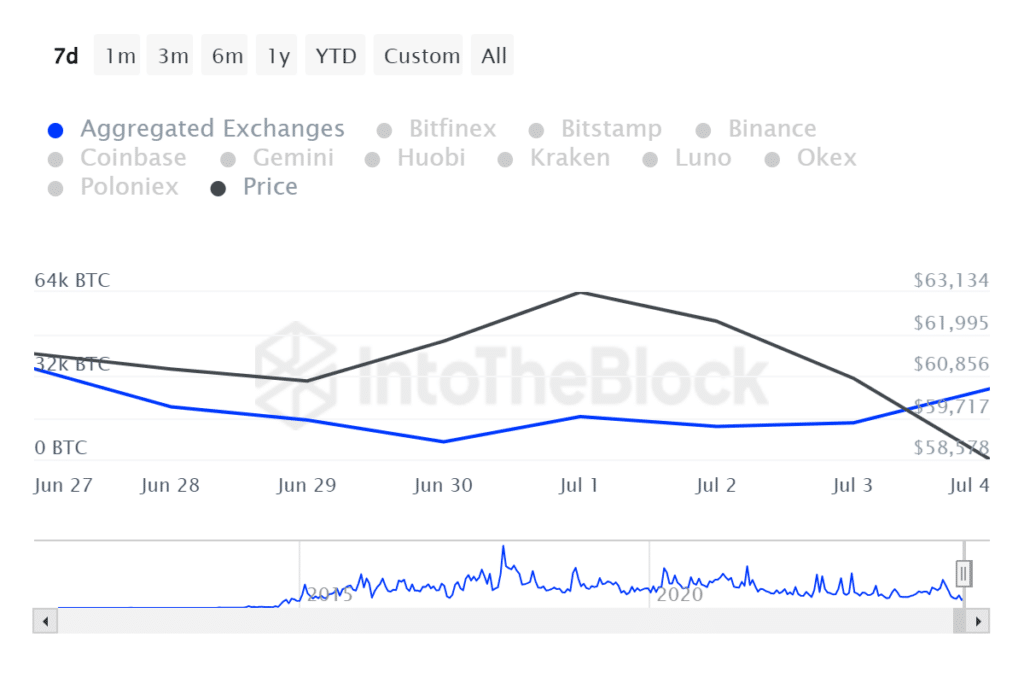As the crypto market continues to evolve, it is crucial to understand the effects of significant events like Bitcoin halving on the market, investors, and the broader economy. The leading crypto sparked a global shift in digital assets and has a distinctive monetary policy. Bitcoin’s halving event occurs approximately every four years.
What is Bitcoin halving?
Bitcoin halving refers to an event that occurs approximately every four years, reducing the number of new Bitcoins mined per block by half. This process is hardcoded into the Bitcoin protocol and serves as a mechanism to control the inflation rate of the leading crypto. By reducing the block rewards, Bitcoin halving ensures a finite supply of Bitcoins, making it a deflationary asset.
The first Bitcoin halving took place in 2012, followed by subsequent halvings in 2016 and 2020. As we approach the year 2024, the next halving is eagerly anticipated by investors and enthusiasts alike. The Bitcoin halving events have historically had a significant impact on the Bitcoin market, leading to both short-term and long-term effects.
This rewards system will persist until the proposed limit of 21 million coins is reached in approximately 2140. At that time, miners will be compensated with transaction fees, which network consumers will pay. These fees ensure that miners remain incentivized to partake in and maintain the network’s functionality.
In 2009, the reward for each chain block mined was 50 bitcoins. After the initial halving, there were 25, then 12.5, and as of May 11, 2020, 6.25 bitcoins per block.
The price change history
Historically, Bitcoin halving events have been correlated with price increases in Bitcoin and the entire crypto ecosystem. This is with significant upward momentum both preceding and following previous halvings. For instance, during the 2012 Bitcoin halving, Bitcoin’s price rose from roughly $12 to over $200 in just one year.
Similarly, Bitcoin experienced a remarkable recovery after its price was halved in 2016, reaching a peak of roughly $19,700 in December 2017. Bitcoin’s price increased after the most recent halving incident in May 2020. Beginning at $8,787 during the halving, the leading crypto experienced a remarkable surge, reaching its all-time peak of nearly $69,000 in November 2021.
Currently, the BTC price stands at $30,564, and market analysts predict that the coin will hit $100,000 in no time. For example, in a May 2021 interview with Bloomberg, Wood made her first bold price prediction, predicting Bitcoin will reach $500,000 by 2026. She then raised the stakes to $1 million by 2030 in early 2022.
The economics of supply and demand
The fundamental economic principle of supply and demand supports a price increase in response to Bitcoin’s halving. According to the law of supply and demand, prices tend to rise when a commodity’s supply decreases, and demand remains constant or increases.
Bitcoin halving has a direct effect on the supply and demand dynamics of the digital currency. The price of Bitcoin should increase as the supply decreases, assuming demand remains constant or increases, according to fundamental economic principles.
Consequently, fewer newly created BTC are accessible for purchase. The decreased supply creates a scarcity effect, which could cause the price to rise if demand for Bitcoin remains constant or increases.
Bitcoin’s restricted supply is a significant factor in its value proposition. The overall supply of Bitcoin is capped at 21 million coins, and the halving mechanism reduces the rate at which new BTC are generated until the cap is reached. This aspect of scarcity, coupled with Bitcoin’s growing popularity and adoption, can produce a perception of limited availability, thereby influencing the price.
The crypto market sentiment and outlook
Bitcoin halving events frequently raise market interest and hype. Positive attitudes among investors and traders may be fueled by expectations of lesser supply and expected price hikes. This optimism often results in increased demand for Bitcoin as traders attempt to profit from the projected price increase. As a result, halving can create a self-fulfilling prophecy of increased market sentiment and demand.
It’s important to realize that market sentiment isn’t always positive at halving events. Market participants may also feel FUD over the potential implications of a price halving. This contradictory feeling might result in short-term price movements and increased volatility.
The mining operations come into play
The economics of Bitcoin halving are far-reaching and can have implications for various stakeholders. For miners, the reduced block rewards necessitate efficient operations and careful cost management to maintain profitability. Miners may need to upgrade their hardware or relocate to regions with lower energy costs to remain competitive.
As miners shift their focus to Bitcoin due to reduced rewards, the hash rate distribution across different cryptocurrencies may undergo changes. This redistribution can potentially impact the security and performance of other blockchain networks.
From a macroeconomic standpoint, Bitcoin’s growing prominence raises questions about its interaction with traditional financial systems. Central banks and regulatory bodies are closely monitoring the developments in the crypto space, seeking to strike a balance between fostering innovation and ensuring stability within the financial ecosystem.





